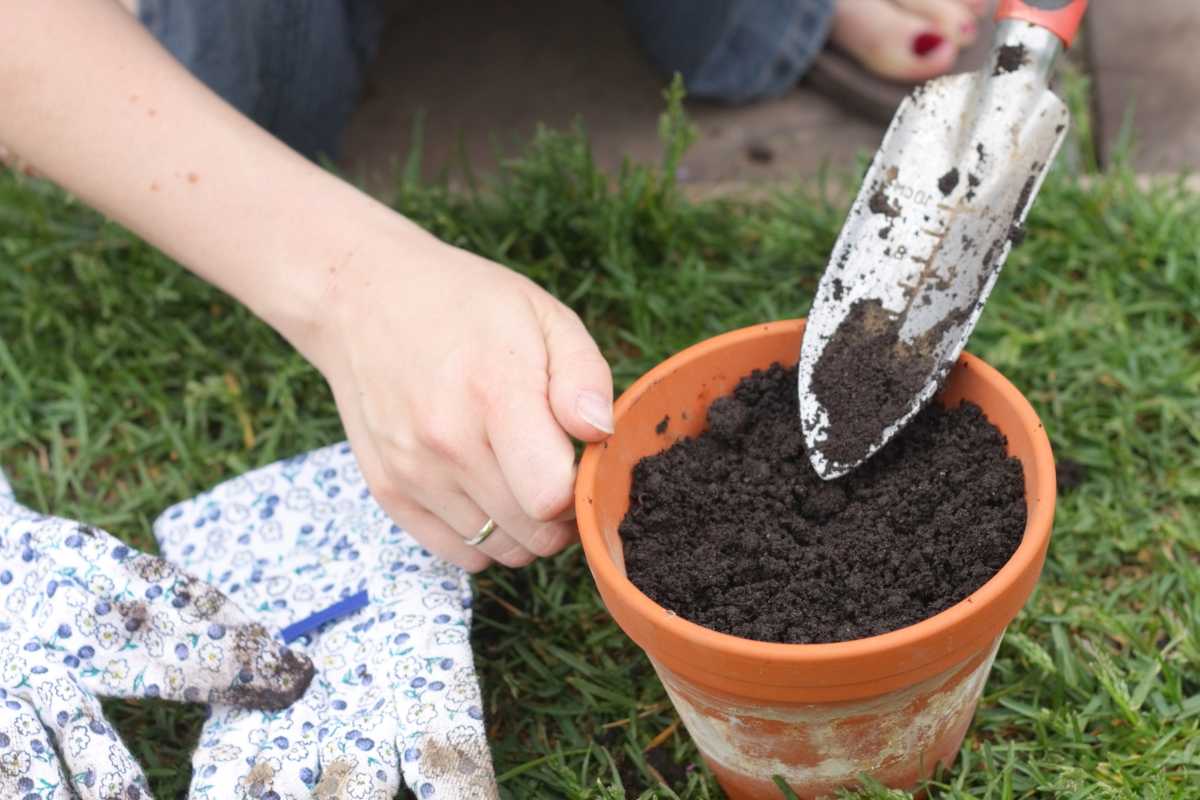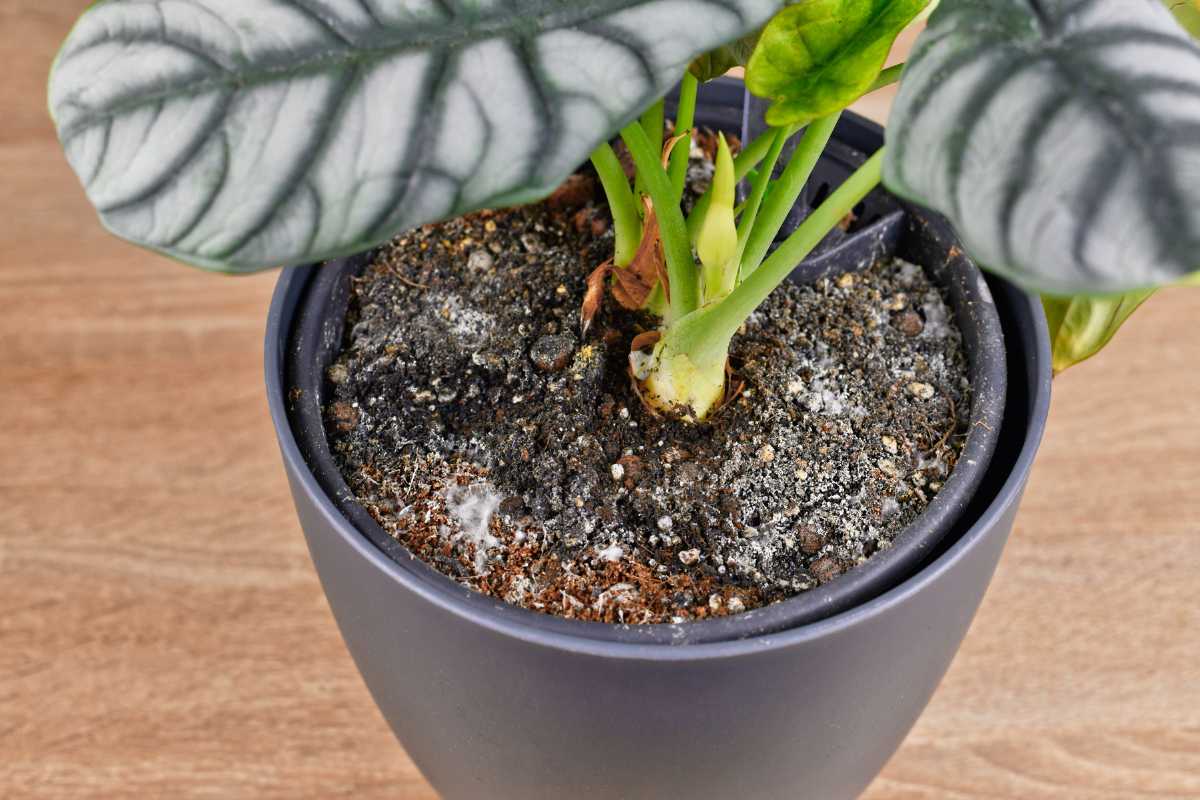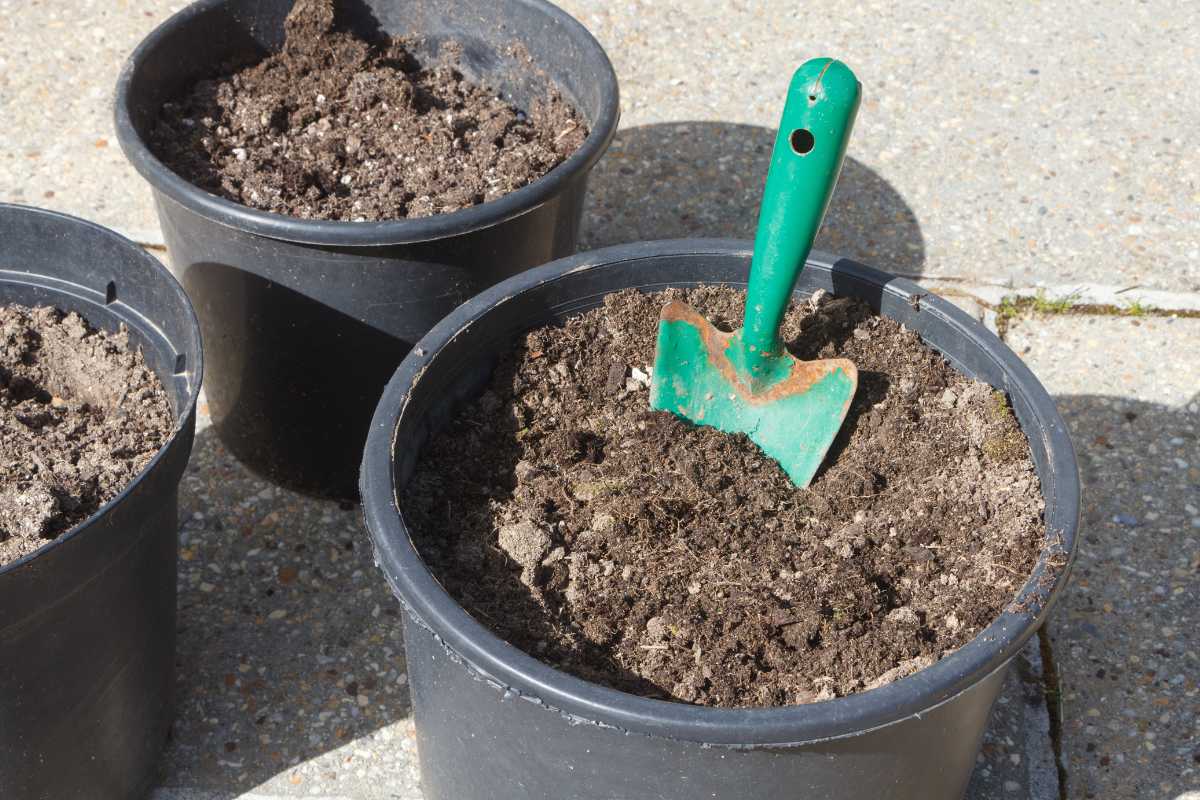Potting soil is a mixture of peat moss, perlite, vermiculite and other ingredients used to keep plants healthy and happy. It’s also used to create raised beds and planters.
But does potting soil go bad? If you’ve ever bought potting soil, you might have noticed that it doesn’t last long. The reason for this is that it contains lots of nutrients that plants need to thrive.
What about the leftover soil once your plants have outgrown their current pots? Can that be reused?
Or maybe you’ve found an old bag of potting soil and you don’t know if you can still use it.
In the article I’m going to take you through whether or not potting soil can go bad, and also discuss some signs that might mean the soil is unusable.
Why Is Fresh Potting Soil Important?

Fresh potting soil is important because it contains nutrients which are essential for plant growth. These include: nitrogen, phosphorus and potassium.
Fresh potting soil will be light, fluffy, and moist. The soil needs to be crumbly rather than compacted to aerate the roots and give them room to grow.
Fresh soil will be easier to work with, but that doesn’t mean that you should throw away old soil.
One thing to bear in mind when it comes to using old soil, is that a lot of fresh potting mixes have nutrients that allow for up to six months of plant growth.
These nutrients may no longer be in the soil if it is left for a long period, although this is easily resolved by adding compost or fertilizers to the mix.
One of the best things you can do is to check the remaining nutrient levels of the potting soil. You can get home test kits that will tell you the pH balance and the nutrient content of your soil.
Does Potting Soil Go Bad?

Potting soil doesn’t go completely bad the majority of the time, but it can require a bit of work to revive it and make it suitable for plants.
Potting soil is only really ‘bad’ if it
- Smells bad
- Has an infestation of bugs
- Is infected with disease
- Is dense and compacted
- Is contaminated with mold or fungus spores.
These things can happen in fresh, store bought bags of potting soil mixes as well as old soil, so check your soil before using it for your plants.
If it has a bad smell, do not use it. A rotten smell can mean the soil contains pathogens that are harmful to humans and plants.
To check for bugs or spores, put a small amount in an empty pot and leave it for a few days. If you see any insects, white mold, or fungus, then don’t use it for your plants. If any of these things occur, return the soil to the store that you brought it from.
If your old potting soil has these issues, and you cannot return it, then you still don’t have to throw it out just yet. You might be able to fix these problems.
How To Rejuvenate Bad Potting Soil
Smelly, bug infested, or moldy potting soil can be corrected by drying out the soil. Spread the soil on a tarp, outside in the sun on a hot, dry day until the soil is dry to the touch. This will evaporate all the moisture content, and effectively kill off any contaminants.
You will then have to re-nourish the soil and add back in beneficial microbes and nutrients. You can find many products for this online and in stores. You can also make your own compost tea or simply mix your potting soil with compost.
If the soil is dense or compacted, it is probably because the product contained peat moss that has decomposed in the bag. Compact soil won’t allow for excess water to drain, which can result in root rot.
You can easily fix it by mixing in organic matter, like compost or coconut coir, or inorganic material, such as perlite, volcanic rock, or clay pellets.
If you have stored your leftover soil correctly, the main issues you will have is that the nutrient value has gone down, and the soil has dried out.
These are both super easy to fix, by simply watering in some liquid fertilizer. You can use store-bought organic fertilizer or compost tea. You can also mix in compost to rejuvenate your potting soil mix to use with indoor plants.
Turn the bad potting soil into something you can use in with your indoor plants or even outdoor garden soil.
Can You Reuse Old Potting Soil?

Yes, you can reuse old potting soil. Do not throw out that old potting soil as it can still be repurposed. If stored correctly, potting soil can have a shelf life that lasts for years.
The hardest thing about reusing potting soil is the storage. If you are living in an apartment, then you may not want bags of soil or storage containers hanging around. If this is the case, you’re probably looking to get rid of it than store it.
Before you throw out the unused potting soil, see if you could donate it to your local school or a public garden, as they will definitely get use out of it. Alternatively, you could buy more houseplants to use it up!
If you have a compost pile, old soil can be added to this and mixed in with the compost. But the best thing to do is store your potting soil to use in the future.
How To Store Potting Soil
Ideally, store it in a dry, cool, area that has limited insect activity. Store it in the original packaging for the best results and seal the packaging as best you can.
If you are unable to seal the opened bag effectively, store your soil in a container or trash bag, but make sure you dry the soil out first. Soil bags usually have tiny holes in them to allow for airflow. But if you’re not going to use the soil anytime soon, keep the soil healthy by keeping air out of it.
By drying out soil before you store it in an air-tight container, you will eliminate the chance that mold or pathogens will form. You’ll have fresher soil this way.
Opened bags of soil will still last for 6 months before they start to degrade, and unopened bags can last for up to two years. Even if you have stored them for longer than this, with a bit of work the soil will be perfectly usable.
When you want to reuse your stored soil, it is still good to use some soil additives even if your soil looks ok. The easiest way of doing this is to add organic material from compost to the soil mix.
That will add moisture, as well as nutrients, and will improve the overall condition of your soil mix. You can also easily tailor your potting mix for the healthy growth of specific plants you are growing.
For a fast draining mix, add sand, perlite, pumice stone, clay pellets, pine bark and/or coconut coir.
For a nutrient heavy mix, add worm castings, compost, bone and blood meal, and/or products that cultivate soil microbes for plant roots, like this root stimulant online.
You should never just throw soil away so that it ends up in a landfill. If you do find yourself with excess soil that you just can’t get rid of, take it to your local park and spread it under a hedge or on the flower beds!
Does Potting Soil Expire? Final Thoughts
Potting soil can be reused and that should be your first thought when thinking about how to dispose of used soil. When looking to revitalize potting soil, it’s try different things to give it proper nutrient requirements for the proper growth of plants.
But also keep in mind that potting soil can eventually be unusable after time. It’s important to know when to replace your potting soil because otherwise, you risk having poor quality soil that won’t provide proper nutrition for your plants.
Potting soil comes in different types: peat moss based mixes, coco peat mixes, sphagnum peat mixes, vermiculite mixes, etc… Each type of soil comes with its own benefits and drawbacks.
Here are more articles to learn more about potting soil:
Old and Used Potting Soil FAQs
Is it OK to use old potting soil?
Yes, it’s okay to use old potting soil, but you may want to give it a refresh. Re-nourish the potting soil by mixing in compost, organic fertilizer, or compost tea. Add in different plant material that can be used for healthy plant growth.
How do you know when potting soil is bad?
You will know potting soil is bad when you see any of these signs in the potting soil:
– Bad smell
– Bug or insect infestation
– Disease infection
– Dense and compacted
– Mold or fungus spore contanimation
How do you rejuvenate old potting soil?
Rejuvenate old potting soil by adding some water and mix in organic fertilizers or compost well. If the soil is still too dry, add some more water until the soil is moistened. Then, use a rake to break up any clumps. Finally, let the soil sit for at least 24 hours before using it again.
What to do if potting soil is moldy?
If you find mold growing in your potting soil, then you should throw away the soil immediately. Mold can cause serious health issues for plants and humans, such as respiratory infections, and even death.
Is dried out potting soil still good?
Dried out potting soil is still good for growing plants, but it needs to be moistened first. Give it a good flush of water and let it drain. Mixing in compost and organic fertilizer can help with keeping it moist, while also adding healthy nutrients.
How long does potting soil last? What’s the shelf life?
Unopened bags of potting soil lasts for about 2 years when stored properly. If the bags are opened and exposed to air, the potting soil should last for 6 months before it starts to lose its nutritional benefits. The shelf life depends on what kind of soil you are buying. For example, peat-based soils have a longer shelf life than other kinds of soil. Peat-based soils tend to stay fresh for 3–5 years. However, they need to be kept cool and protected from direct sunlight. Once opened, store them in an airtight container.
What are the contents of good potting soil?
A good potting soil should contain organic matter such as peat moss, composted manure, vermiculite, perlite, sand, and other natural materials. The best potting soils also include nutrients like nitrogen, phosphorus, potassium, calcium, magnesium, iron, and sulfur.
How should potting soil be stored in the winter?
Potting soil should be stored in a cool dry place, such as a garage or shed, but not somewhere it can possibly freeze. If you store it outside, it may freeze during cold weather. If you have plants currently using the potting soil, this could damage the roots of your plant. You can keep unused pots of potting soil inside a plastic bag that has holes punched into it so moisture drains through. Or, wrap each individual pot in newspaper and put all the newspapers together in another large paper sack. Make sure there’s enough space between the layers of papers so the soil doesn’t get wet. Store this way until springtime.


